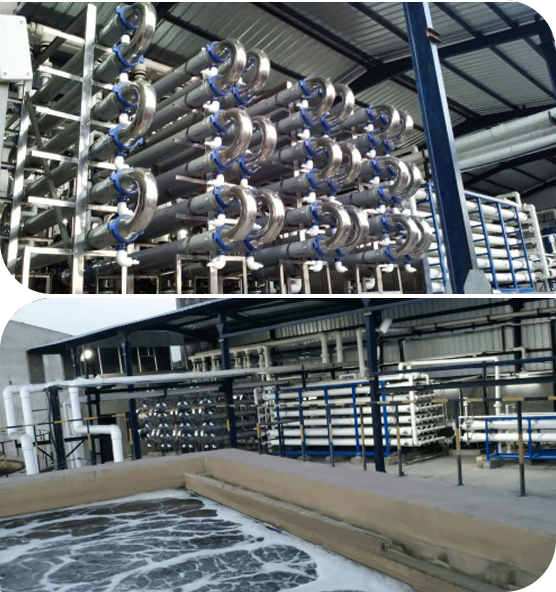
Waterman Engineers Australia has become the top makers of Zero Liquid Discharge process. A ZLD process is a treatment process that is utilized to remove all the liquid squander from the program. The aim of ZLD water treatment is to lower wastewater economically and develop potable drinking water which is match for normal use. Zero discharge process is a sophisticated therapy method that comprises ultrafiltration, reverse osmosis, evaporation and fractional electro deionization. And we've been a properly-recognized provider of ZLD techniques.
In several Industries, for example electrical power, oil & fuel, chemical substances, mining and others, a great deal of wastewater is created that must be managed. Conventionally, this discharge of wastewater is finished through a plant outfall to a surface area h2o entire body like an evaporation pond, or occasionally deep effectively injected. These tactics result in lots of environmental worries by the general public in many areas of the whole world, as water can be a scarce resource and its management needs to be monitored. These problems have resulted within the establishment of ZLD processes by quite a few industries to reduce their environmental footprint and improve sustainability. And, Waterman Engineers Australia are ideal ZLD suppliers you can find for this system.
Qualities OF ZERO LIQUID DISCHARGE Technique
The Houses of the Zero Liquid Discharge procedure can vary with regards to the precise structure and technologies employed. Even so, some widespread Houses of ZLD programs include things like:
Drinking water Conservation: One among the key goals of ZLD techniques is always to conserve h2o by reducing the discharge of liquid waste into the environment.
High H2o Purity: ZLD programs are intended to generate higher-quality h2o that is certainly free of charge from impurities and contaminants, that makes them suited to use in many industrial procedures.
Versatility: ZLD systems will often be made to accommodate a wide selection of enter liquid streams, which makes them functional and ideal for use in various industries.
Innovative Wastewater Treatment: Zero liquid discharge devices use Sophisticated wastewater procedure ways to take out impurities and contaminants from your effluent, developing large-high-quality water.
Waste Reduction: ZLD units assist lower squander by decreasing the amount of liquid squander that should be disposed of and by creating a concentrated, reliable squander product that may be safely and securely disposed of.
Electrical power Efficiency: ZLD methods might be Electricity-intense because of the large Electricity specifications of evaporation and other wastewater therapy processes. Nevertheless, improvements in technological know-how are earning Zero liquid discharge programs far more Electricity-successful and value-powerful.
Waterman Engineers Australia manufactures Zero Liquid Discharge (ZLD) programs intended to take out all liquid waste, aiming to generate potable h2o and lessen environmental affect. Their ZLD techniques normally consist of ultrafiltration, reverse osmosis, evaporation, and fractional electro deionization. Important systems utilised are Falling Film Brine Concentrators, Forced Circulation Crystallizer, and Other individuals, that has a two-phase process of pre-focus and evaporation/crystallization to Recuperate and reuse h2o. These programs are adaptable to distinct industries, emphasizing h2o conservation, substantial water purity, squander reduction, and Power performance. Technical technical specs are different and customizable, contemplating things like water resource, flow amount, and feed water excellent.
The need for Zero Liquid Discharge (ZLD) programs occurs in the requirement to deal with environmental considerations connected to water scarcity and pollution. In industries like ability, oil & gas, and mining, extensive quantities of wastewater are created. Typically, this wastewater is discharged into bodies of drinking water, causing pollution and depleting clear drinking water means. ZLD methods goal to reduce these impacts by managing and recycling wastewater in just the industrial method, therefore conserving drinking water, cutting down squander, and promoting sustainability.
When considering the specialized specs of a Zero Liquid Discharge (ZLD) program, critical features to deal with include the h2o resource it will eventually treat, the system's flow rate, the quality of feed h2o, the levels of cure included, the recovery price of water, solutions for focus disposal, elements of development, working circumstances, and system automation and control. These components make sure the technique's efficiency, durability, and performance in dealing with and recycling industrial wastewater.
Zero Liquid Discharge (ZLD) plants give Positive aspects for example drinking water conservation, squander reduction, and pollution avoidance, contributing to environmental sustainability. They're relevant in industries like electrical power technology, oil and gasoline, chemicals, and mining, the place they assist in taking care of industrial wastewater properly, reducing the ecological footprint, and complying with stringent environmental regulations. These devices are vital in spots struggling with drinking water scarcity and for industries aiming to improve their sustainability and operational performance.
FAQs for any Zero Liquid Discharge (ZLD) procedure usually handle its operational rules, Price tag-usefulness, servicing prerequisites, environmental impression, applicability throughout several industries, and regulatory compliance. These issues support consumers realize the technique's Advantages, technical Zld System Manufacturer Zero Liquid Discharge System needs, and suitability for their precise wastewater administration needs.
1. Zero Liquid Discharge (ZLD) is actually a wastewater treatment method approach meant to get rid of all liquid waste.
2. The method's elements are influenced by the specific industrial method, wastewater composition, and regulatory demands.
3. Effluent cure crops get rid of pollutants from textile effluents to avoid environmental contamination.
4. Positive aspects contain water conservation, pollution reduction, and regulatory compliance.
five. The target is to reduce environmental affect by recycling water and decreasing squander.
six-9. Effluent therapy crops are phases in wastewater treatment method: Major (physical separation), secondary (Organic treatment method), and tertiary (Innovative remedy).
ten. Unit operations involve filtration, sedimentation, biological therapy, and disinfection.
eleven. Limiting parameters are things that have an affect on the treatment method's efficiency, like pH and contaminant focus.
12. Style and design issues consist of move fee, effluent composition, and preferred high-quality of taken care of h2o.